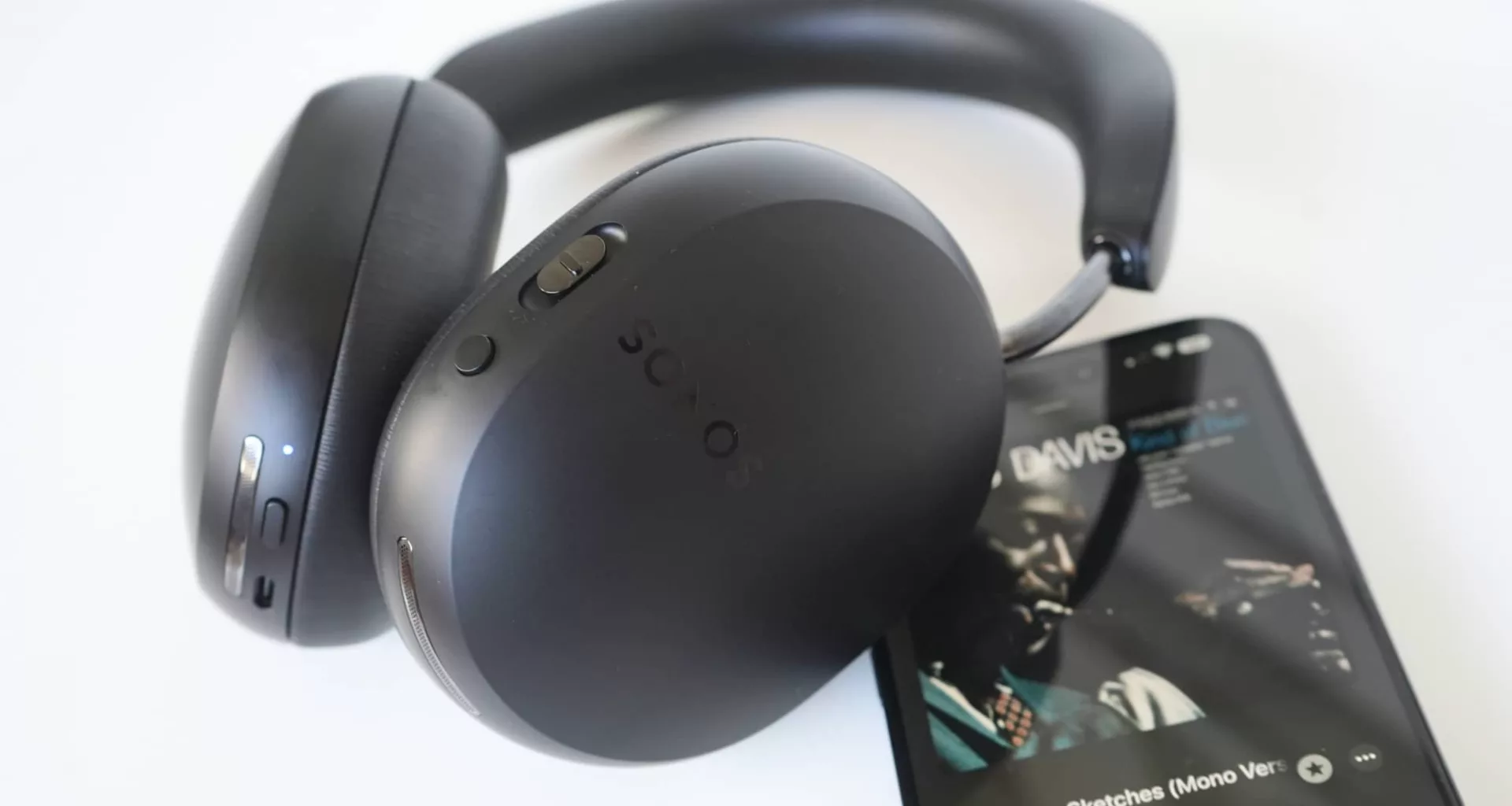Quick review
The good
The not-so-good
The first pair of headphones from speaker brand Sonos, the Sonos Ace are a grand slam, delivering so many high-end features in a pair made to work for movies, music, and anything else in between.
You don’t have to look hard to find a selection of premium headphones out in the world, but the question of which is better isn’t always an easy answer.
If you’re an iPhone user, you’ll almost always be guided to a pair Apple makes, particularly if you use Apple Music, but what if you listen to Spotify? And what if you dance with Android? What then?
Picking between the best noise cancelling headphones isn’t easy, often landing on feature set. If you need the best noise cancelling, there are options. And if you’re picking on comfort, there are options there, too.
But what if you want something to fit in with your speaker system at home? The first pair from Sonos has that in mind, as the Ace aims at offering an extra feature for folks who have a Sonos speaker or two in their lives already.
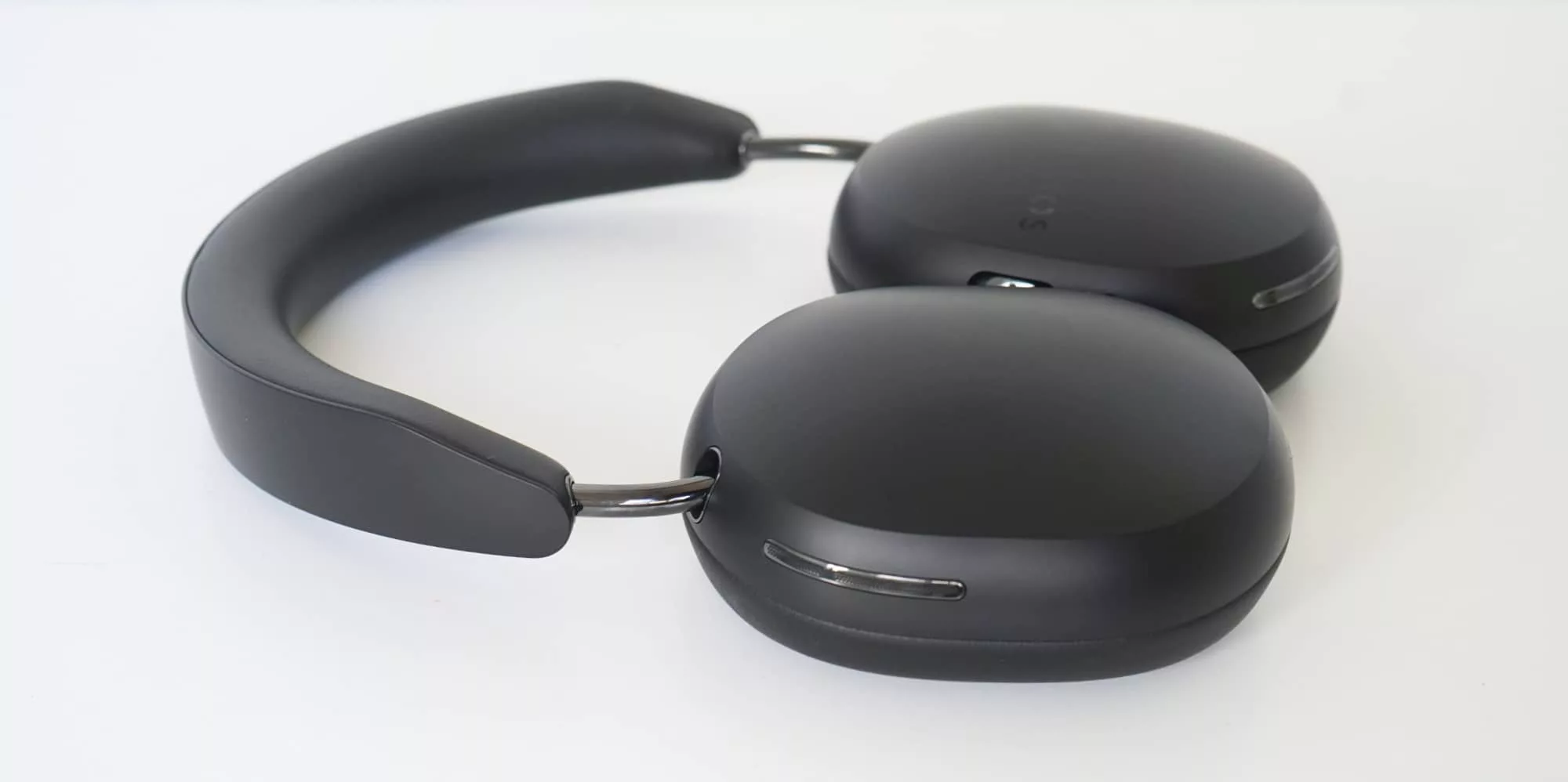
Design and features
Sonos’ first headphones, the Ace comes with features not unlike products as high-end as the rest of the brand. While the company’s speakers often come with custom drivers and several amplifiers, the Ace headphones skip out on the latter because they don’t need them, retaining the former because they do matter here.
There’s a custom 40mm driver in each cup, a Qualcomm Snapdragon Sound chip to process audio and wireless connections, four microphones on each ear for eight total, wear detection sensors, head-tracking sensors for dynamic spatial audio playback, a few buttons, and LED, and a choice of either white or black for how the headphones look.
Support for noise cancellation is included in the Ace, as is a hear-through transparency “Aware” mode, and there’s also support for lossless audio, too, dependent on your hardware. Some devices will get it wirelessly, others will need to plug in for the privilege, depending on how high the bitrate is.
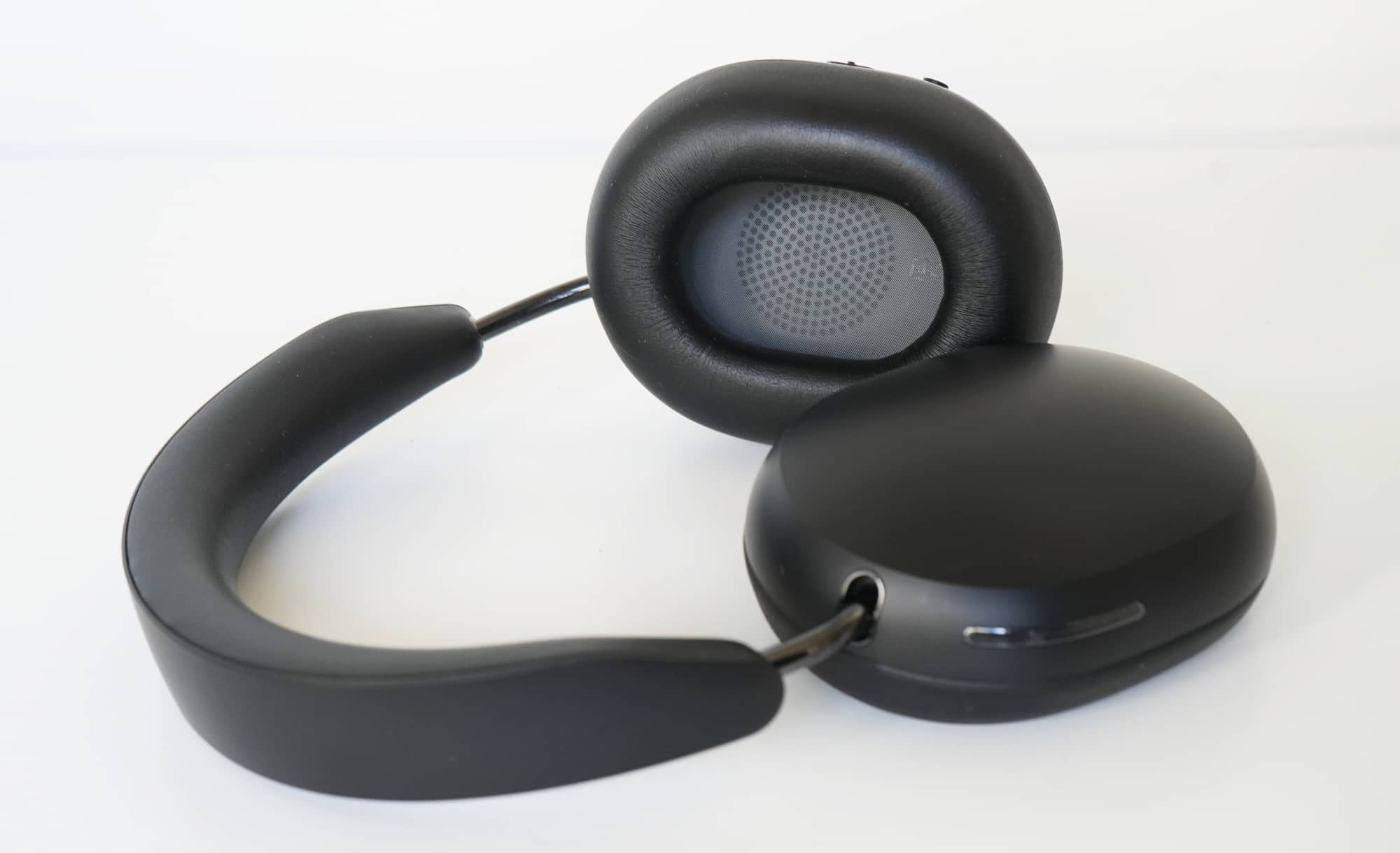
The whole thing weighs 312g, making them a little on the heavy side, but comes with a case to store them, but a couple of cables for good measure, as well. Plastic, vegan leather, and stainless steel form the design, with a premium look and feel.
Glance at the design, and you might be reminded of the AirPods Max, with a flat ovular look that feels as though a pair of Sony headphones also made the design cut. It’s pleasant and easy on the eyes, while also conforming with that typically high-end look Sonos speakers receive.
In-use
Don the headphones and you should find a decent amount of comfort, thanks in part to around-ear circumaural cups that fit comfortably. Each was large enough for our ears, and will likely be fine for yours, too.
Sonos has also labelled left and right clearly on the replaceable earpads, which clip into place using magnets should you need to replace them later on.
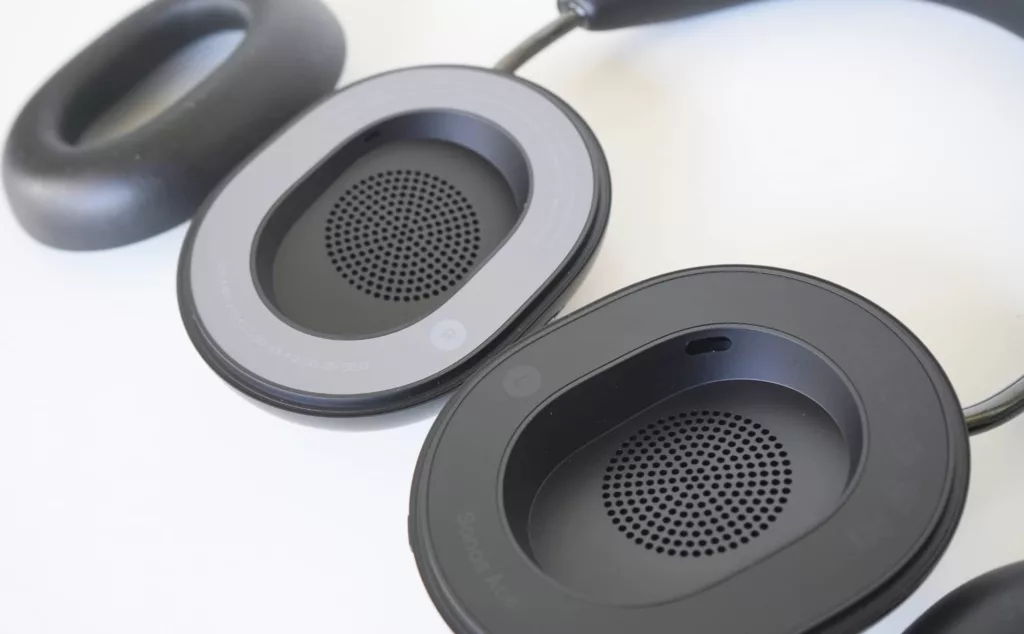
There are a few controls on the cans, and they won’t require much in the way of memory, either. Sonos has skipped the touch panels here, likely because they can be hit and miss, instead going with buttons and a neat little volume controller that allows you to push up and down on a bit of a volume rocker of sorts. Press the button inside that rocker, and you’ll pause and play with one press, go forward a track with two, and back one with three.
It’s easy enough to recall, with the second button on the right can letting you cycle between noise cancelling modes, while the one button on the left can is for power and pairing.
For everything else, there’s the app, which lets you turn features on and off, including whether multipoint works and if the auto-pause sensor is working to cut the sound when the headphones are off your ears.
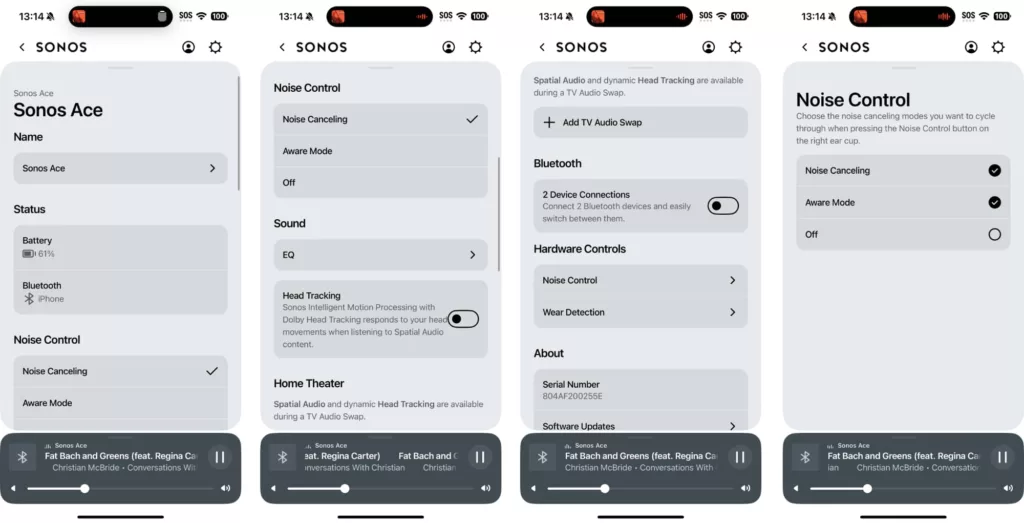
Performance
When they’re on your ears, you’ll likely be listening to something. To test how well they handle that, we’re diving into sound performance by running a pair of headphones through the Pickr Sound Test, which you can listen to for yourself, and that starts with electronic.
Specifically, it starts with Tycho and Daft Punk, each of which deliver a deep and spacious sound stage, offering beautifully layered instruments, a lovely set of warm mids and bass, and a rounded sound.
It’s a great first impression, and sets up the Ace beautifully for what comes next: pop is clear and punchy, while soul offers a solid warmth that’s impossible to deny. Even the guttural sounds of FKA Twigs’ “Two Weeks” are perfectly pronounced, with little lost, if any. The percussion can be heard, the foreboding keys and synth, and a well-layered delivery that just makes you shudder.
These are some great headphones, delivering solid balance and a touch of warmth, not unlike the brand’s speakers.
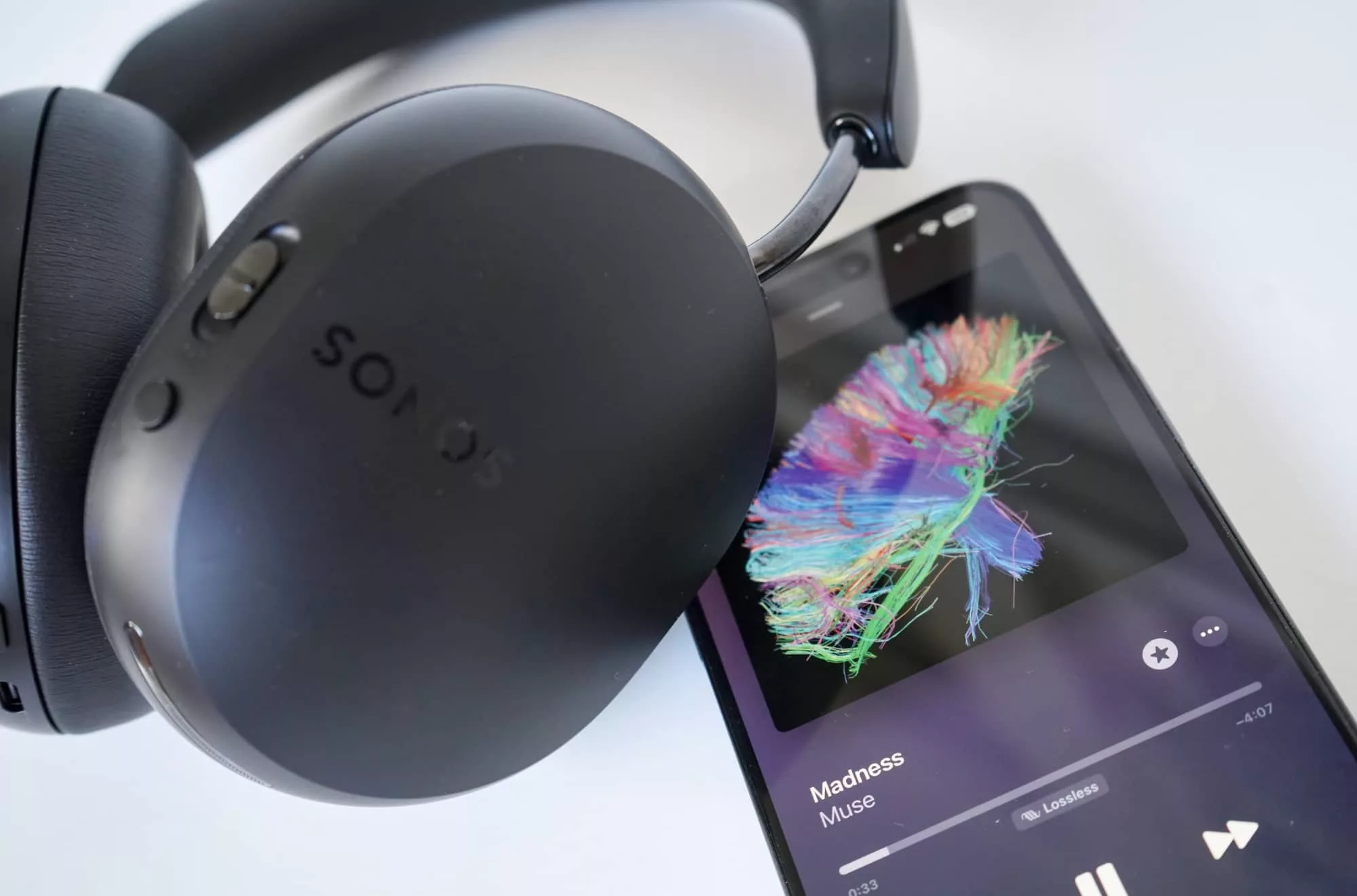
Jump into rock, jazz, and classical, however, and the Sonos Ace steps it up another level. It’s almost as if they handle over-engineered modern music well, but are made for the beautifully mixed and mastered tracks even more so.
Whether we’re listening to Rage Against The Machine, the Deftones, Muse or The Beatles, the sound is a brilliant rendition worthy of Sonos’ speakers, and we suspect that’s the point. As usual, listening to David Bowie is a joy, and something the Sonos Ace allows you to take so much delight in, and it’s much the same with jazz and classical.
From two instruments jamming to a quartet just having a ball, the delivery is a joy in the Sonos Ace. As we said before, these are some great headphones. You won’t be disappointed with the sound.
They will love what you listen to, and make you want to listen to it all some more. That’s not a bad thing.
Noise cancellation
Active noise cancellation is clearly a major part of these headphones, and it’s a part that definitely works to block much of the noise of the world, but mightn’t feel as on the ball as other high-end brands.
We’ve seen a lot of development in this area over the past few years, and while Sonos is new to it, the Ace headphones come out swinging. Much of the noise around is quelled by the ANC on offer, but not all of it manages to get shut out. Most disappears, which is great.

What you don’t get, however, is a way to optimise and control the cancellation like you do with other headphones apps. It’s largely on or off, or with a hear-through transparency mode, and neither ANC nor transparency handles wind noise well, the rustling of wind pushing against the mics on the Ace with ease.
The app could clearly be better, a statement you could make about Sonos in general at the moment since the app refresh earlier this year.
Spatial audio
Head-tracked spatial audio is also along for the ride in the Sonos Ace, but not in the way you may expect. While the Sonos Ace technically supports head tracking, you’re not getting music via a proper Atmos stream.
Rather, the experience is very much like what Bose delivers in its Quiet Comfort Ultra Headphones: a Spatial Audio conversion that works regardless of the operating system you use, and regardless of the music service.
Whether you use Spotify or Apple Music, the head tracking kicks in and moves you around the left and right stereo sound, which isn’t quite the same as what real Atmos provides, but won’t likely bother most people.
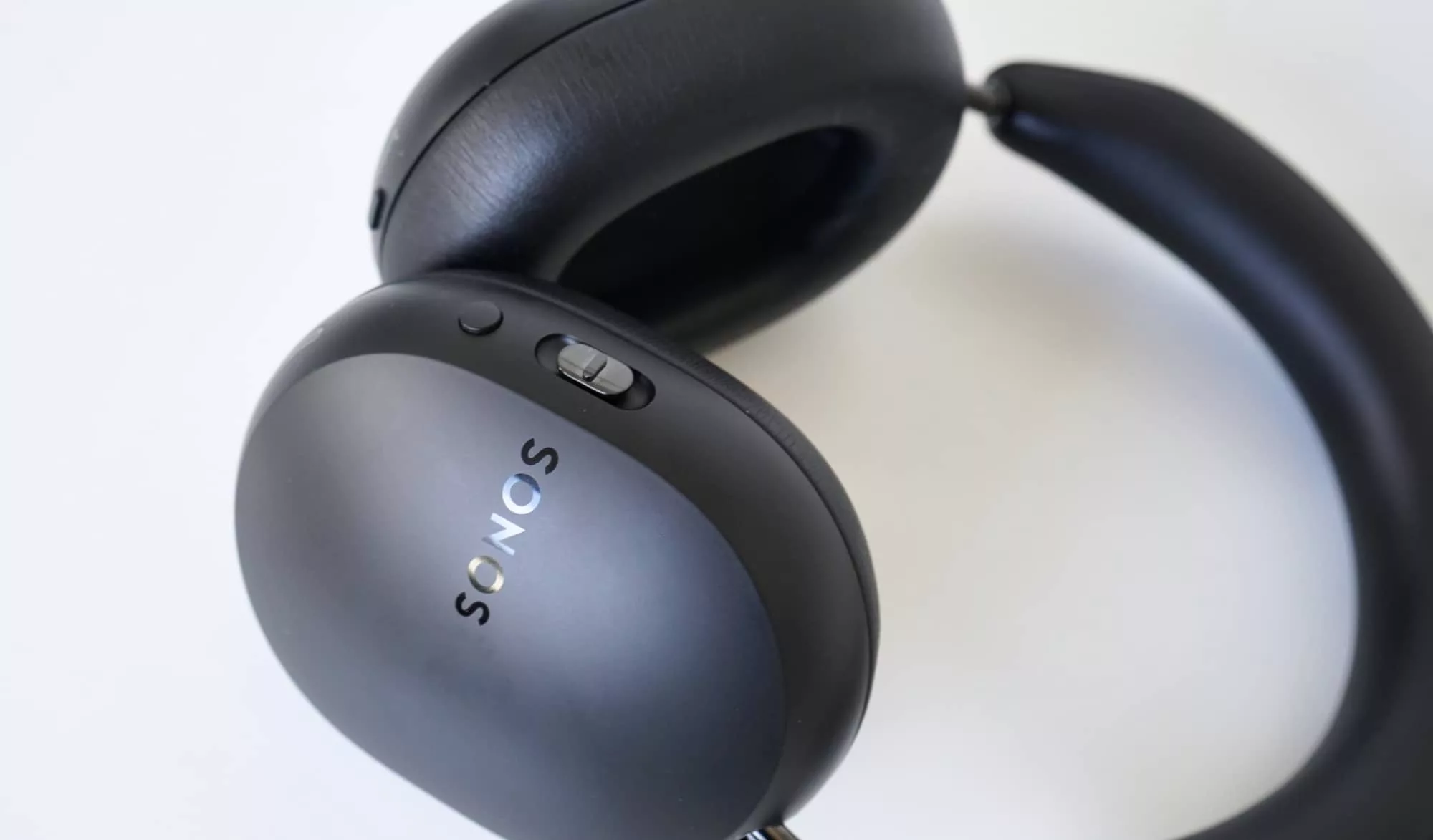
Jump into Apple Music while using the Sonos Ace on an iPhone, and you’ll see no Dolby Atmos logo appears. Much like how that’s no moon in Star Wars (it’s a space station), that’s no Atmos track you’re listening to, it’s an approximation. And that will be totally fine for most people, too.
One thing of note: just like other head-tracking headphones, the spatial can sometimes get a little stuck at angles, and you may need to wait for it to catch up. It happens.
Movies
Our Sonos Ace review has something most headphone reviews don’t have: a movie component, and that’s largely because the Sonos Ace is one of the first pairs of headphones built as a sort of soundbar accessory of sorts.
Simply put, if you have a recent Sonos soundbar and an iPhone, you can use the Ace as a personal speaker for that soundbar if you want to watch TV, but not interrupt anyone else.
The idea makes sense if you have kids that have gone to bed, and you desperately want to watch a movie on the big screen in the living room, but fear waking up the little ones. Maybe you want to watch something without disturbing your partner. Both of these are ideal use cases for the Sonos Ace’s soundbar feature, which works a little differently from music playback.

While the headphones are Bluetooth most of the time, when you want to connect to a soundbar, you will “swap” the audio output and engaged using WiFi, specifically using WiFi Direct.
You’re not aware it’s happening, but Sonos is using WiFi Direct to for this little instance, largely because WiFi is more battery intensive and the headphones don’t need to run WiFi constantly.
At launch, only the Sonos Arc soundbar is supported, but later in the year, support is expected to roll out to the Beam Gen and the Sonos Ray, as well as the older Beam Gen 1. Sonos is going a little back through the archive, it seems, but not back to the days of the Playbar and Playbase, it seems. You’ll also need an iPhone alongside the Arc to make this work, with Android support rolling out later.
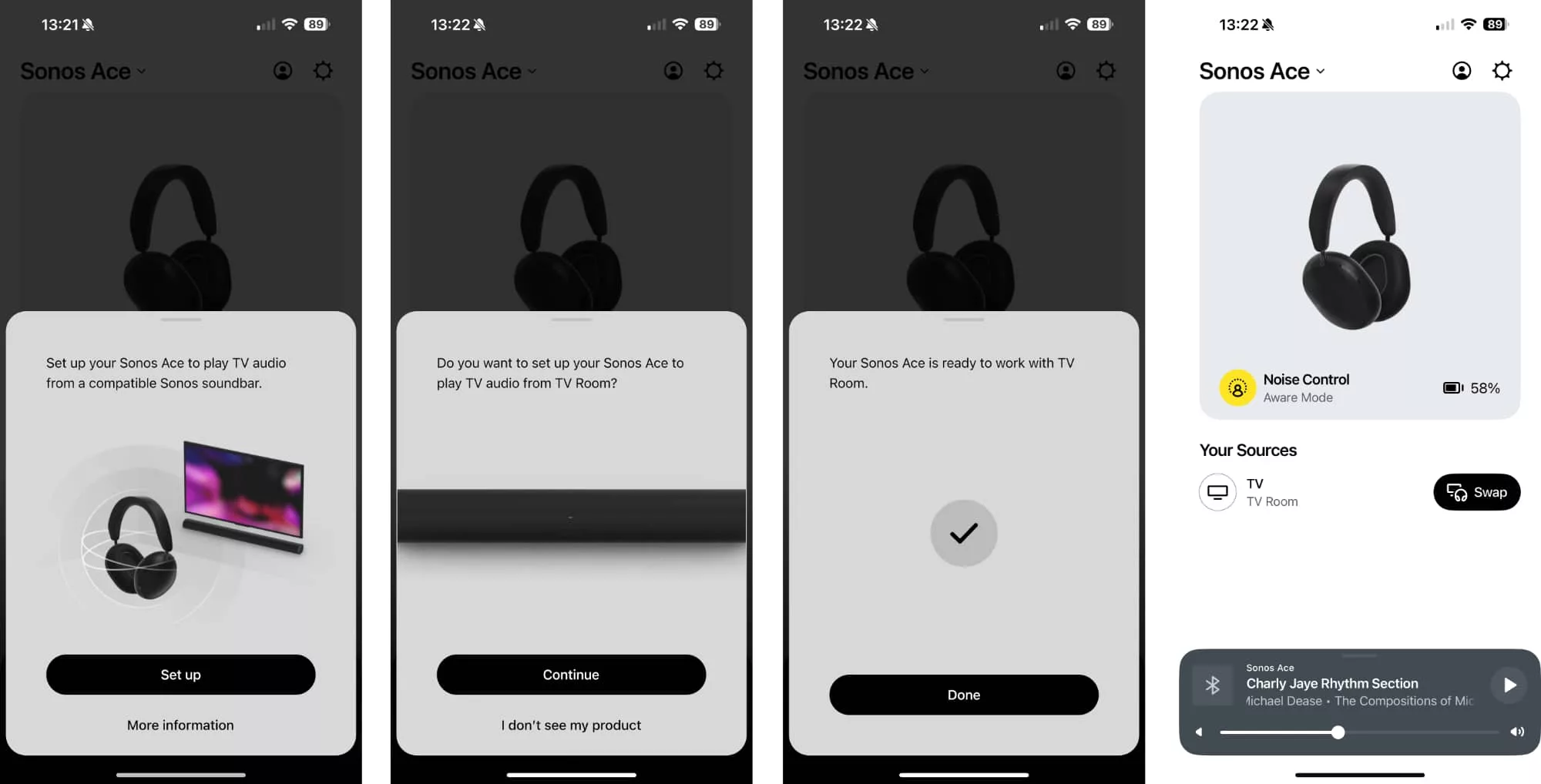
Making TV Audio Swap work isn’t difficult — when the Sonos Ace is near the Arc, you’ll be able to set the switching system up, and then press a button to go from one device to the other.
It’s practically instantaneous, so you can quickly throw your headphones on and shut your soundbar up. It can be buggy at times, but our experience found it worked most of the time.
Testing the idea with our movie playlist normally reserved for soundbars (this is a first!), we start with Spider-Man where the dimensionality is clear complete with the head tracking, with the bass impactful and deep. The mix was a touch flatter than the proper soundbar mix we could hear via the Arc, but that’s to be expected: there’s a whole lot of space in our room, and much less in the headphones.
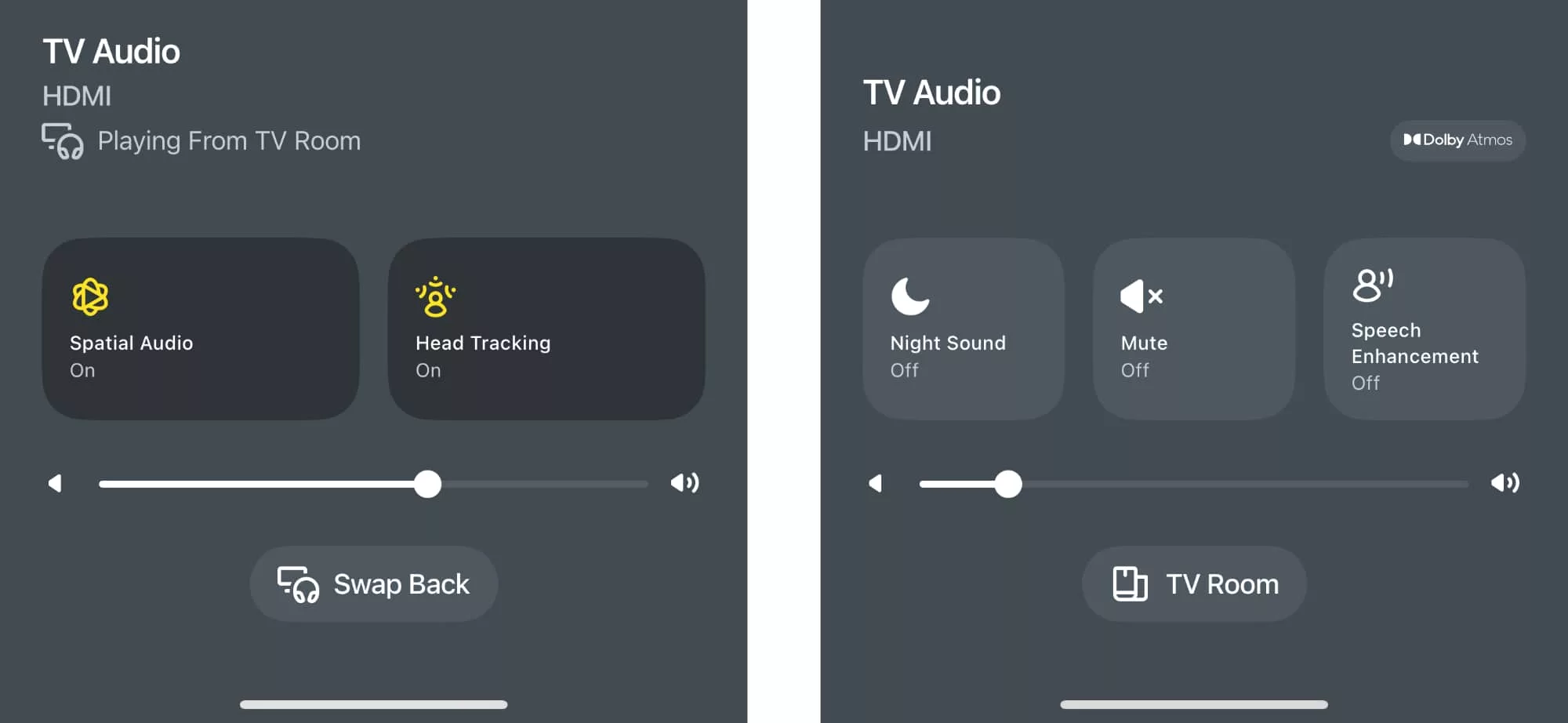
It was a similar experience listening to John Wick and Jurassic World, but the star of our movie test was clearly Mad Max: Fury Road, with beautifully sparse and clear sounds, the booming voice of Tom Hardy, and a really solid delivery of spatial.
We’re not sure if we’re getting a proper Atmos track with the Sonos Ace — the information shown on screen via the Sonos app misses out on the Dolby Atmos logo when connecting via headphones — but the result is spatial enough to make you think you’re getting a 3D movie sound.
In short, it’s like having a personal movie system made just for you. When it works, the sound is great, even if it’s not quite as spacious as a proper soundbar can deliver in your living room.

Battery
Throughout this time, you’re relying on a decent battery, managing a good 30 hours with noise cancellation switched on at the maximum, though you may see a little less with head-tracked spatial.
It’s not quite the 50 hours of the Sennheiser Momentum 4, another competitor to this pair, but it’s enough battery life to survive the trip from Sydney to London. And thanks to it being USB-C (like everything else), you can easily top that up quickly if need be, with a three minute charge resulting in three hours of life.
Sonos also includes a USB-C to 3.5mm headset jack should you want to use that, again making it easy to switch back to an older port, like plugging directly into an inflight headset jack.
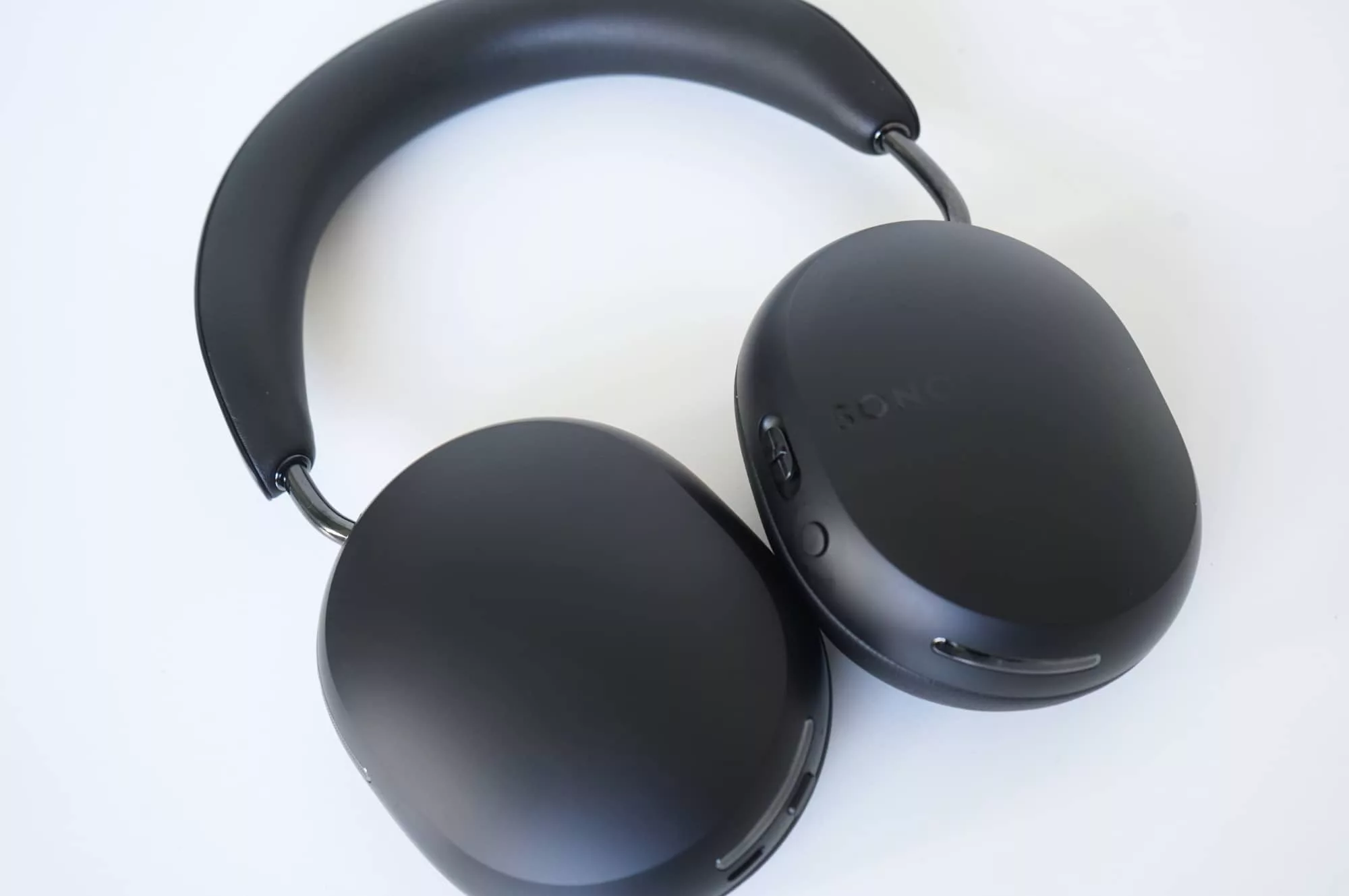
Value
Australian pricing sees the Sonos Ace in premium territory for headphones, hardly surprising given Sonos gear often sits there as it is.
At $699, the Sonos Ace sit slightly higher than some other noise cancelling headphones, but not quite as high as Apple’s AirPods Max, a pair of headphones the Ace are clearly aimed at that already focuses on audiophiles.
There’s a similar style and support for head-tracked spatial, and the pads are even magnetic and replaceable in much the same way. To Sonos’ credit, you get slightly more in the box, with a felt case that’s clearly more than the basic “bra” of the AirPods Max, plus two cables in the box, a USB-C to USB-C that can be used for both charging and music playback over Type C ports, plus the USB-C to 3.5mm cable.
That’s not bad value at all when you consider these can be optional extras. It’s still on the pricey side, of course, but high-end headphones often are.
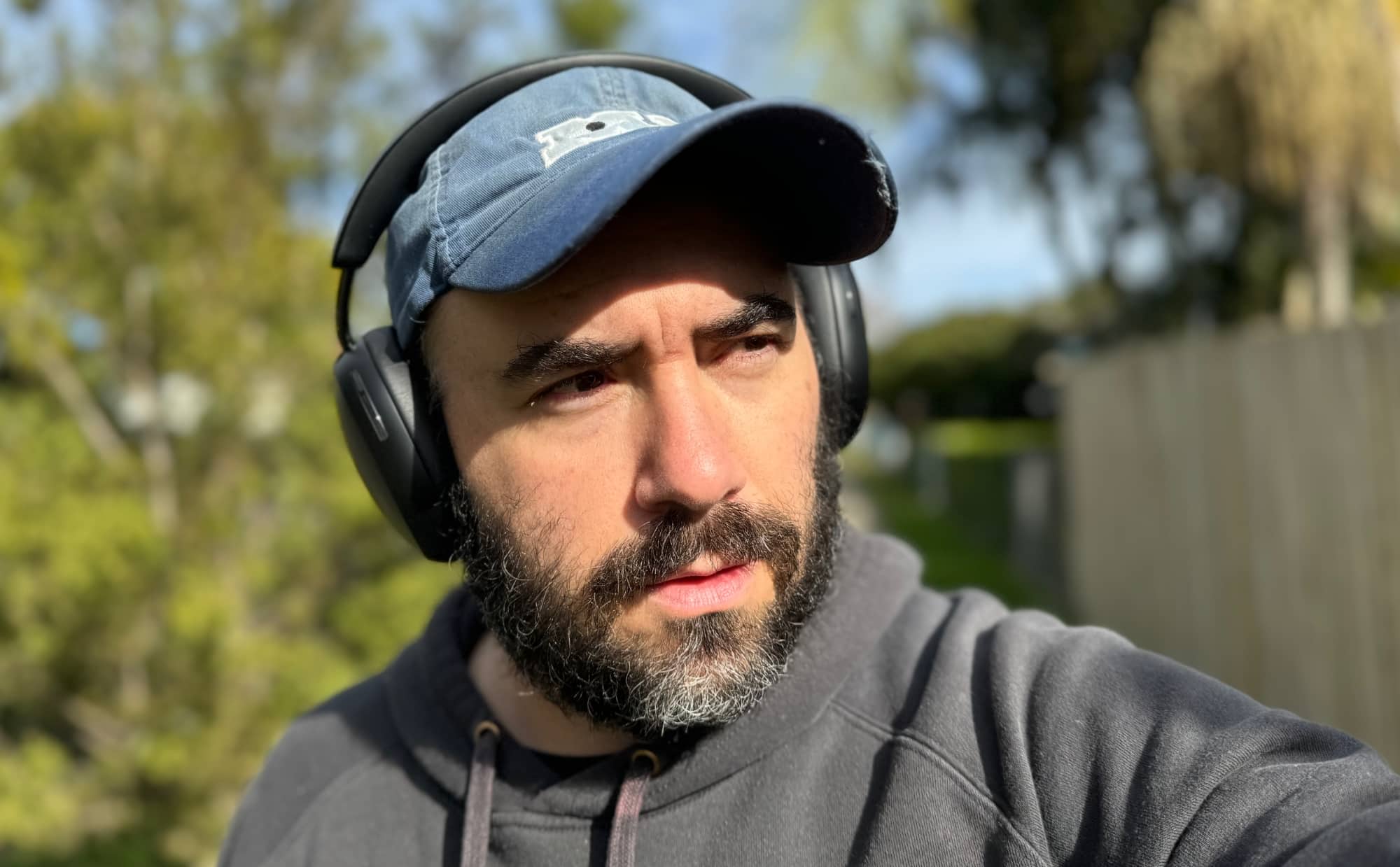
What needs work?
We do have some reservations, however, because it’s not all aces, it seems.
For instance, the noise cancellation could be a touch better. It’s where the AirPods Max is, but they were released a little under four years ago, and the AirPods Pro 2nd-gen have better noise cancellation by comparison. We’re not quite at the level of what Bose can offer, and both flagship headphones from Sony and Bose offer degrees of active noise cancellation you can dial in.
The soundbar swap feature could also be better if Sonos supported more than one pair of headphones, though that is something which may occur later.
Ahead of the Ace announcement, Sonos told Pickr that a single pair of headphones was the most likely use it found after research.
“We did a lot of user testing, and found the most common use case would be a single person, not two,” said Aki Laine, Director of Industrial Design at Sonos.
“We’re always looking into ways to enable our customers to enjoy the content in a more meaningful way,” he said. “It’s something we’re looking into in the future.”
It’s worth pointing out that these issues are very much the sort of thing that could be solved with subsequent firmware updates later down the track. That will likely come soon to fix the gamut of app problems from the recent app update, and it should include Android support for TV Audio Swap as well as an improvement to the soundbar playback with a recreation of your living space in “True Cinema”.

Everything else worth mentioning largely feels like a niggle, but is still worth mentioning:
- The zipper on the case can be fickle, and the pouch for storing your cables is a pain to actually stuff the cables into.
- The USB-C cable could be longer, and ideally should given the headphones can be plugged into a USB-C phone, tablet, or laptop.
- The wind resistance isn’t fantastic, and occasionally bleeds in.
- The pause sensor doesn’t always engage, and almost never does when the headphones are wrapped around your neck.
- The casing on our black Sonos Ace headphones can pick up on the grease from your fingers all too easily.
- And yes, the app is buggy. Sometimes you need to force crash it just to get it work.
It’s the sort of list that just evokes an eye roll or two. We wouldn’t be surprised if you rolled your eyes while reading it. We get it. For a first pair of headphones, Sonos got a lot right. That’s important. But it did also get some things wrong.
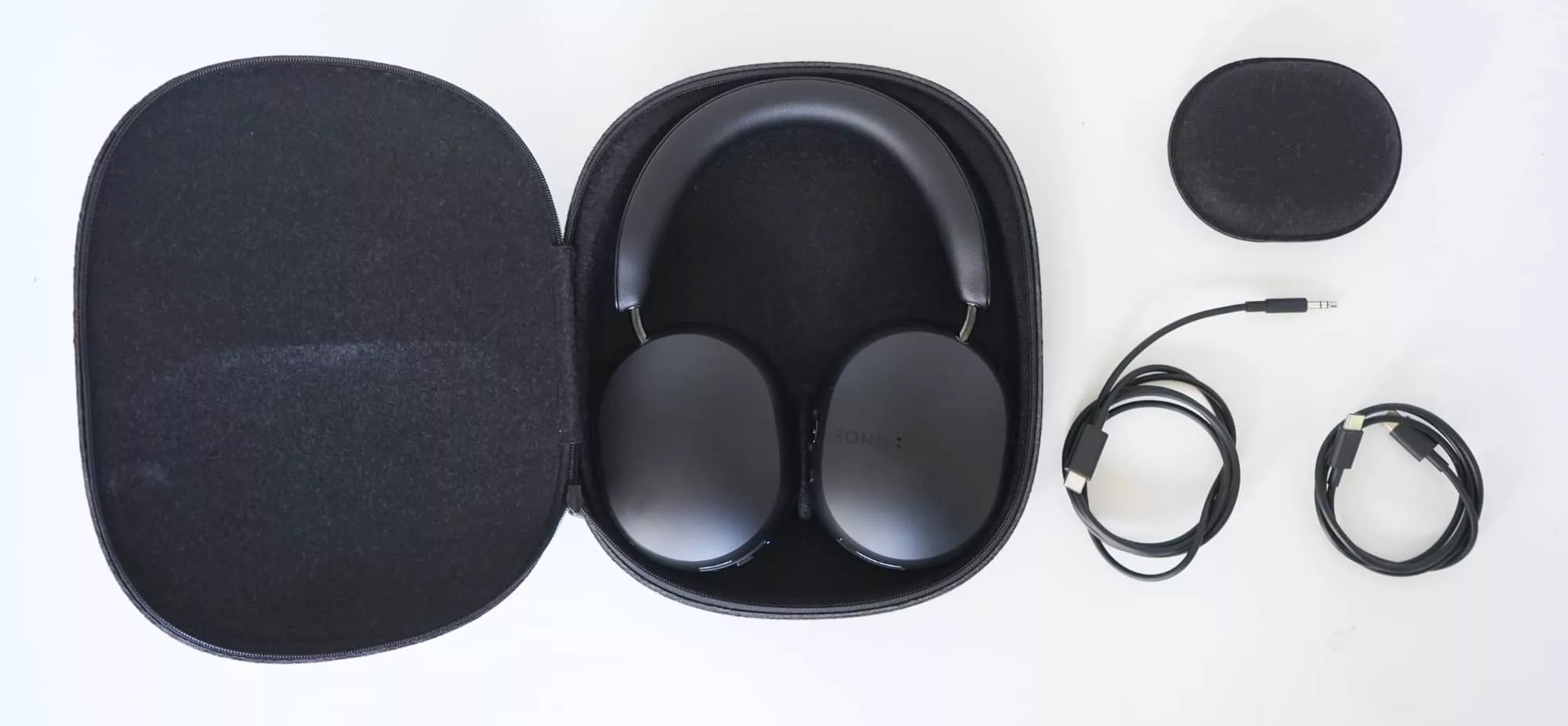
Sonos Ace vs the competition
Sonos is also fighting trying to take on some solid competition, and that’s important, too. It’s not as if the company is alone in making premium headphones, either. There are plenty of options to consider.
The most obvious competitors are equally high-end, including the $649 Bose Quiet Comfort Ultra Headphones, the $649 Sony WH-1000XM5, and the $899 Apple AirPods Max, the latter of which is approaching four years of age this year.
Design-wise, we think Sonos is definitely targeting the look and feel of the AirPods Max, right down to the similar magnetic earpads, while the sound is also reminiscent. It’s warm, vibrant, and detailed as all hell.
But the spatial audio experience is better on the AirPods Max, because you get an actual Dolby Atmos music track on Apple devices. However, the way Sonos has implemented head tracking is very much like the Bose QC Ultra.
In terms of the whole package, we think the Bose pair is easily the obvious competitor, but Sonos has one thing going for that Bose can’t match: soundbar replacement. That neato feature where you can take over from a soundbar is unique for most headphones.
We say “most” because Apple AirPods and Beats wireless models will do much the same with an Apple TV, supporting up to two pairs at any one time. Apple’s take only works with an Apple TV, so it’s not quite the same, but it’s clearly close enough for jazz.
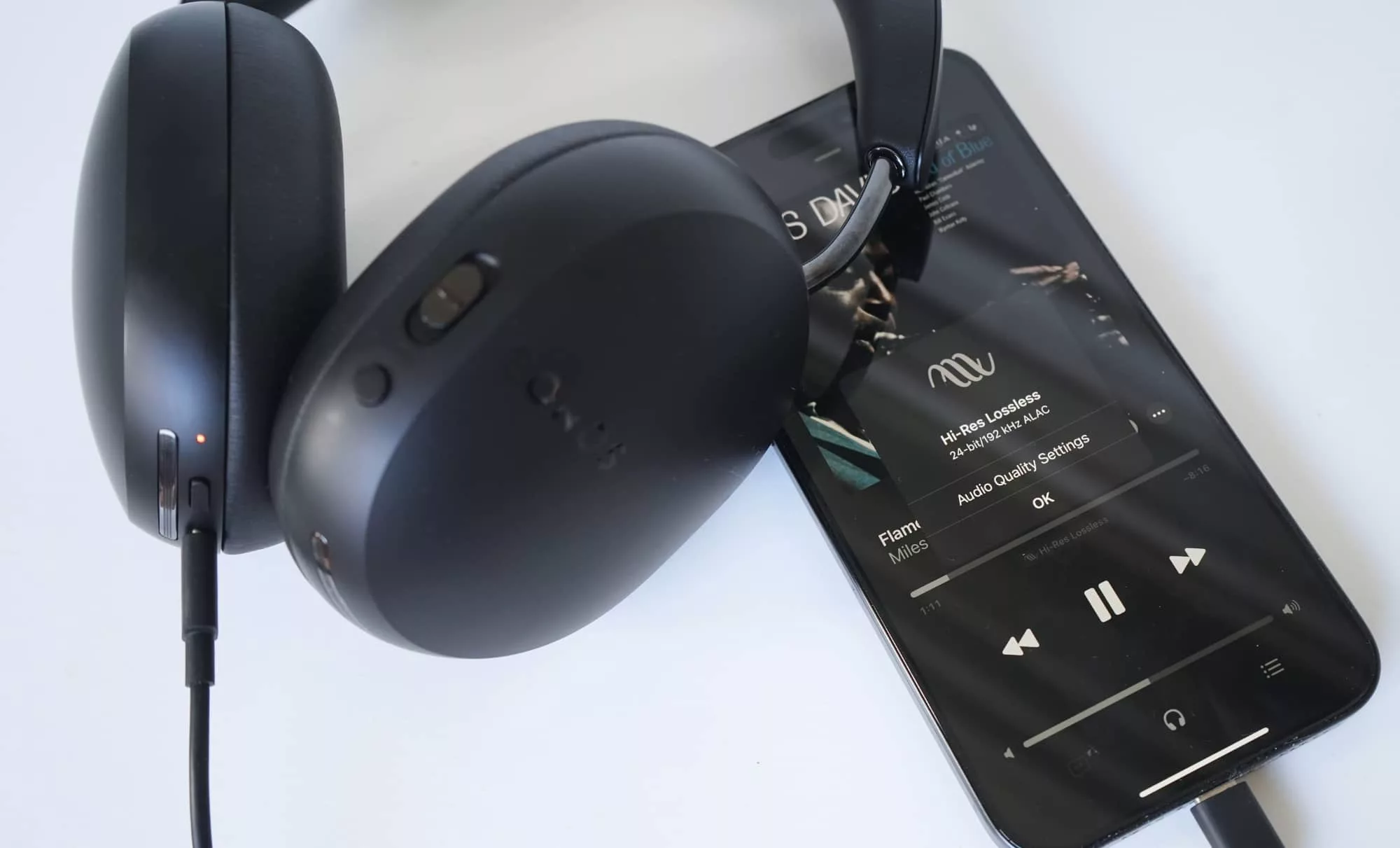
Final thoughts (TLDR)
It is perhaps a little unsurprising that Sonos’ first headphones are good; practically everything Sonos makes — certainly everything we’ve reviewed — is of high quality, delivering fantastic sound for an often high-end market and price point.
Sonos doesn’t make a lot in the mid-range or budget part of the market. Its best gear is for big spenders, and it tends to last a long time, as well. App issues aside, what Sonos makes is typically high quality, and the Sonos Ace is no different.
These may well be Sonos’ first headphones, but they deliver, offering a package sure to fit in well with a Sonos home. These are things that could be better, sure, but much like how Sonos adds new features to its speakers over time, it’s a pair that will likely improve with time.
For now, what Sonos is offering in the Ace headphones is a taste of the high-end for any device — phone, tablet computer — and even for folks who want a pair of headphones made to match a high-end soundbar they may already own. A solid start in a high-end pair. Recommended, particularly if you have an Arc already.



